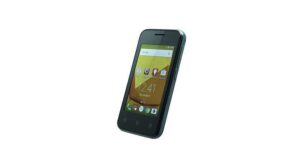Learning isn’t just about dusty textbooks any more. Through technology, education – a basic human right – has become more accessible. As active supporters of education for all and a leading tech company, Vodacom is focused on #ConnectedLearning. Virtual Reality is one such innovation that we are tapping into to make education through technology a possibility in all of South Africa and beyond.
Kids can now be transported to new worlds right from their classrooms, courtesy of Virtual Reality headsets and apps.
Virtual Reality (VR) has become increasingly popular with schools as the technology has become cheaper, and organisations are now creating educational content specially designed to be experienced using VR.
Platforms such as Google Expeditions enable pupils to take virtual trips around the world, into space, and even back in time. The use of drones to film in previously inaccessible areas, such as the no-go zone around the former nuclear reactor in Chernobyl, Ukraine, means we can explore the planet like never before. At home, games consoles such as PlayStation4 and Oculus Rift offer VR titles, while you can also download apps to play on your phone or tablet. It’s a technology that takes players on adventures that parents could only have dreamed of when they were young.
What makes VR good for education?
VR can transform the way educational content is delivered by creating a virtual world, real or imagined, and allowing students to interact with it. Being fully immersed in what you’re learning allows for better processing of information, and makes learning so much more fun. Instead of reading about the Great Wall of China, students can take a virtual tour of the area. They can even be transported to the International Space Station, or explore the inside of some of the world’s great museums.
When students read about something, they often want to experience it. With VR, they aren’t limited to word descriptions or book illustrations; they can explore the topic and see how things are put together. Thanks to the immersive experience VR provides, students can learn about a subject by living it. With VR, learners are inspired to discover for themselves, and they can learn by doing, rather than just by reading.
Google Expeditions is a good example of an app that’s providing such an educational VR experience. Expeditions is a library of field trips available for regular smartphone users. Each trip is comprised of VR panoramas, and trips vary from Machu Pichu to Mars.
VR is useful not only for content consumption, but it’s also great for content creation and entertainment experiences. By giving students powerful tools such as Tilt Brush, you help them boost their creativity. Tilt Brush allows kids to paint in three dimensions, using media like ice, fire or snow.
All you need to get started with VR learning is an app like Google Expeditions, a VR headset, and your smartphone. There are several budget options on the market, and if you don’t want to spend a penny, Expeditions also offers their content as 360 pictures and videos that can be viewed on a normal smartphone. (Most phones are compatible.)
What should VR learning look like?
Here’s what to look for in a VR learning experience:
- Immersive. A good VR experience should give you the feeling of being transported to another time and place. The more immersed you are in the experience, the more you can take in and remember.
- Easy to use. The best VR experiences are the ones where you can drop in and out at your leisure, no steep learning curves required.
- Meaningful. You can’t create a good VR learning experience without a good story. Stories can provide the best vehicle for delivering messages that are not only heard and understood, but that also inspire action.
- Adaptable. VR experiences should allow you to explore at your own pace. The app should provide complete control over the level of difficulty.
- Measurable. You should be able to measure the impact of the learning experience, whether through a quiz or simply a conversation with the learner afterwards.
Learn with tech from Vodacom
Upgrade to the latest device and start enjoying the incredible world of tech. Check out the cellphone deals on Vodacom Online and get free delivery, free connection and free SIM.
Photo by mentatdgt from Pexels



